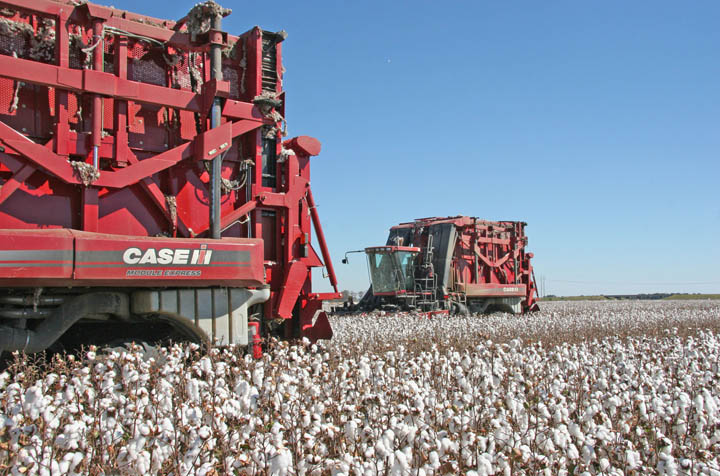
Cottonseed production from the 2010 U.S. cotton crop is expected to reach 6.2 million tons, compared to last year’s 4.1 million tons. After the crush (about 2.5 million tons), about 3.7 million tons will be available for feeding to dairy cows.With good growing conditions across the Cotton Belt and relatively minor weather events during harvest, cottonseed quality is expected to be very good.Cottonseed is an excellent source of fiber, protein and energy. Typical rations can include up to 15 percent cottonseed on a dry matter basis.

The tightening global cotton supply, coupled with China’s ravenous appetite for lint, could be the much needed shot in the arm for U.S. cotton growers to expand acreages in 2011, and produce even more whole cottonseed for dairies.
“The cottonseed supply already is on the upswing,” said Tom Wedegaertner, director of cottonseed research and marketing, Cotton Incorporated. “Throughout 2010, we’ve been expecting a doubling of the cottonseed supply compared to last year, and a return to more normal levels of the feedstuff. With 1.3 million more acres planted, good growing conditions across the Cotton Belt and relatively minor weather events during harvest, we are confident the seed yield and quality will be very good.”
While USDA’s November World Agricultural Supply and Demand Estimate lowered the national average for yield by 20 pounds of lint per acre, the 2010 harvest is still forecast to reach 18.4 million bales. Cottonseed production is expected to reach 6.2 million tons, compared to last year’s 4.1 million tons. Wedegaertner said after the crush (about 2.5 million tons), about 3.7 million tons will be available for feeding to dairy cows.
John Robinson, professor and Extension economist, cotton marketing, Texas A&M University, said an early and largely hurricane-free harvest contributed to the healthy crop.
“Across the country, harvest has been ahead of pace from previous years, particularly because of the droughty growing conditions,” he said. “The USDA lowered national yield average, but overall we saw little degradation. West Texas was hit with a rain and hail storm in October, affecting only a small portion of the crop, and the lower Texas coast and the Carolinas received a few blows from hurricanes, but generally dodged the devastation. The problem area was with the upper Texas coast receiving more rain over a longer period of time.
“With a higher production of cottonseed expected, we could see prices return to levels we saw a couple years ago when we had a comparable crop,” he said.
Wedegaertner advised producers to keep an eye on other factors that could keep prices firm.
“A strong demand for vegetables oils, including cottonseed oil, could put pressure on the available cottonseed supply,” Wedegaertner said. “Crushers could consume anywhere from 2.5 million to 3.25 million tons. Additionally, a strong export market for cottonseed could emerge as supply grows and exchange rates remain favorable.
“The good news is that, because of the extremely high price for cotton lint right now, we are looking at potentially a much larger crop for 2011, so there is optimism on the horizon for an even more plentiful cottonseed supply in the future. This might just help keep prices from increasing next summer.”
Cottonseed is an excellent source of fiber, protein and energy. Typical rations can include up to 15 percent cottonseed on a dry matter basis. For more information, including reports on market conditions, feeding information and a list of suppliers, go to www.wholecottonseed.com.
About the Author(s)
You May Also Like





